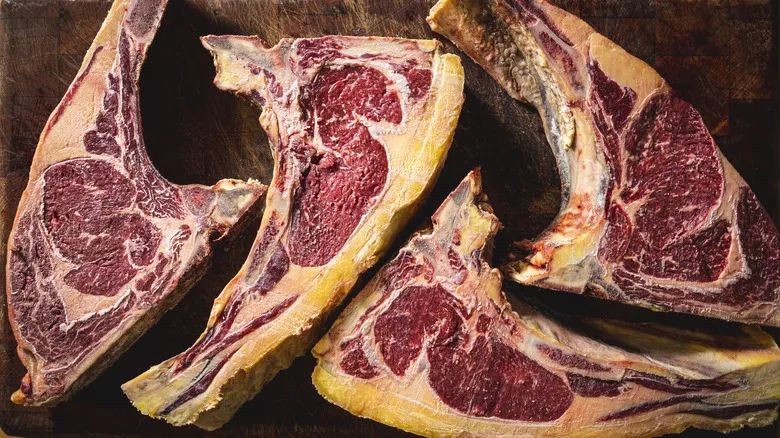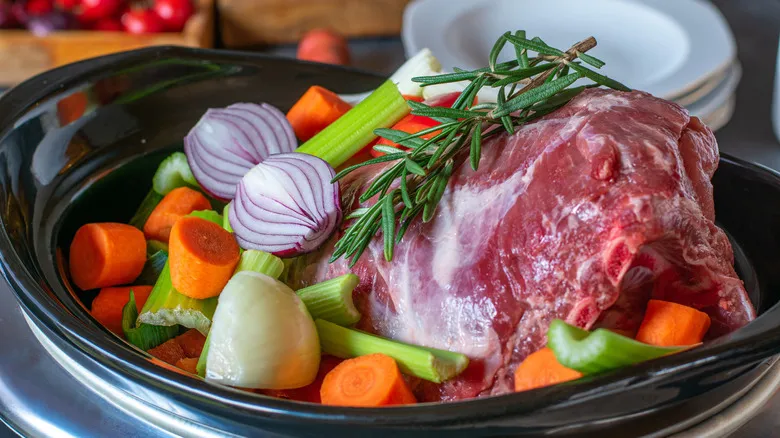The duration of dry-aging impacts the flavor

The dry-aging process is a complex undertaking that involves a gradual transformation of beef. Assessing its readiness through external inspection can be challenging, so it's essential to monitor the aging time closely. When done correctly, there is a significant timeframe during which the meat is at its best for consumption.
Tenderizing effects begin to manifest after two weeks, which is the minimum time worth the effort. By 21 days, noticeable changes occur; the fat darkens, and the meat shrinks by about 10%. However, the flavors truly develop around the one-month mark, which is considered the ideal aging period. At this stage, the steak will have lost approximately 15% of its weight and will start to exhibit rich, savory flavors reminiscent of mushrooms. The funkiness becomes more pronounced, nuttiness increases, and blue-cheese-like notes emerge around 45 days. Beyond this point, the flavors induced by bacteria may be off-putting to some diners due to their sharpness (the pungent cheesiness intensifies with time), and the steak may lose around 30% of its weight. While the crust can darken significantly as it ages, a butchered, ready-to-cook dry-aged steak may not appear as vibrantly red as its wet-aged counterpart.
It's crucial to understand that the ideal aging period is subjective; the interplay of flavor and meat cut varies, as do individual preferences. To determine your preferred dry-aged steak, it's advisable to sample various aging durations before making a choice. Regardless of when you decide the steak is ready to eat, keep in mind that dry-aged beef can be particularly challenging to grill. After all, you wouldn't want all your hard work to go to waste.
Dry-aging requires a carefully controlled environment

Dry-aging involves much more than just storing beef in your refrigerator for a long time. Steaks that are aged for less than a week typically won’t show any significant enhancement in flavor. In fact, the opposite may occur; meat stored in a home fridge can pick up unpleasant odors from other foods. Additionally, before the aging process can yield benefits, harmful bacteria may lead to spoilage. Therefore, it’s crucial to invest in a dedicated refrigerator equipped with proper ventilation for effective aging.
This is why steakhouses utilize specialized aging facilities that maintain precise humidity, temperature, and airflow. The aging process relies on enzymes present in the meat and beneficial bacteria from the environment. It’s important to thoroughly clean the refrigerator before use and minimize door openings. You might even consider intentionally introducing beneficial mold into the setup. Being aware of the conditions before and during the aging process is essential for ensuring the meat is safe to eat.
Once the aging is complete, pay close attention to any odors. Make sure there are no unpleasant smells, such as sour or foul scents, or anything that doesn’t seem appetizing. The aroma of properly dry-aged beef should resemble that of aged cheeses—rich, nutty, and complex, yet always inviting.
Recommended

Bobby Flay's Brilliant Hack To Reheat Dinner Party Dishes

3 Tips For The Quickest Salad Prep Ever

You Need To Spice Up Your Store-Bought Ranch

Always Remember The Golden Rule For Cheesy Slow Cooker Meals
Next up

